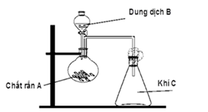Read the following passage and mark the letter A, B, C, or D on your answer sheet to indicate the correct answer to each of the questions from 43 to 50.
What is “extreme” weather? Why are people talking about it these days? “Extreme” weather is an unusual weather event such as rainfall, a drought or a heat wave in the wrong place or at the wrong time. In theory, they are very rare. But these days, our TV screens are constantly showing such extreme weather events. Take just three news stories from 2010: 28 centimetres of rain fell on Rio de Janeiro in 24 hours, Nashville, USA, had 33 centimetres of rain in two days and there was record rainfall in Pakistan.
The effects of this kind of rainfall are dramatic and lethal. In Rio de Janeiro, landslides followed, burying hundreds of people. In Pakistan, the floods affected 20 million people. Meanwhile, other parts of the world suffer devastating droughts. Australia, Russia and East Africa have been hit in the last ten years. And then there are unexpected heat waves, such as in 2003 in Europe. That summer, 35,000 deaths were said to be heat-related.
So, what is happening to our weather? Are these extreme events part of a natural cycle? Or are they caused by human activity and its effects on the Earth’s climate? Peter Miller says it’s probably a mixture of both of these things. On the one hand, the most important influences on weather events are natural cycles in the climate. Two of the most famous weather cycles, El Niño and La Niña, originate in the Pacific Ocean. The heat from the warm ocean rises high into the atmosphere and affects weather all around the world. On the other hand, the temperature of the Earth’s oceans is slowly but steadily going up. And this is a result of human activity. We are producing greenhouse gases that trap heat in the Earth’s atmosphere. This heat warms up the atmosphere, land and oceans. Warmer oceans produce more water vapour – think of heating a pan of water in your kitchen. Turn up the heat, it produces steam more quickly. Satellite data tells us that the water vapour in the atmosphere has gone up by four percent in 25 years. This warm, wet air turns into the rain, storms, hurricanes and typhoons that we are increasingly experiencing. Climate scientist, Michael Oppenheimer, says that we need to face the reality of climate change. And we also need to act now to save lives and money in the future.
What caused thousands of deaths in 2003?
A. a period of hot weather
B. floods after a bad summer
C. a long spell of heavy rain
D. large-scale landslides




